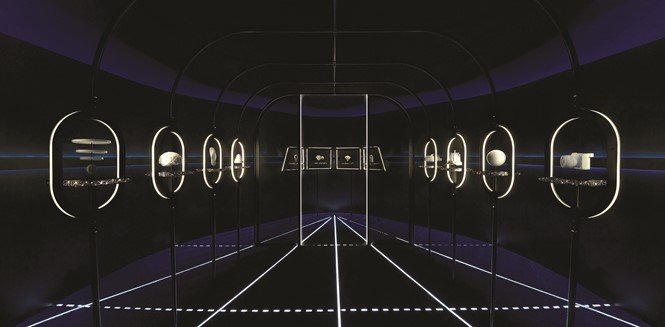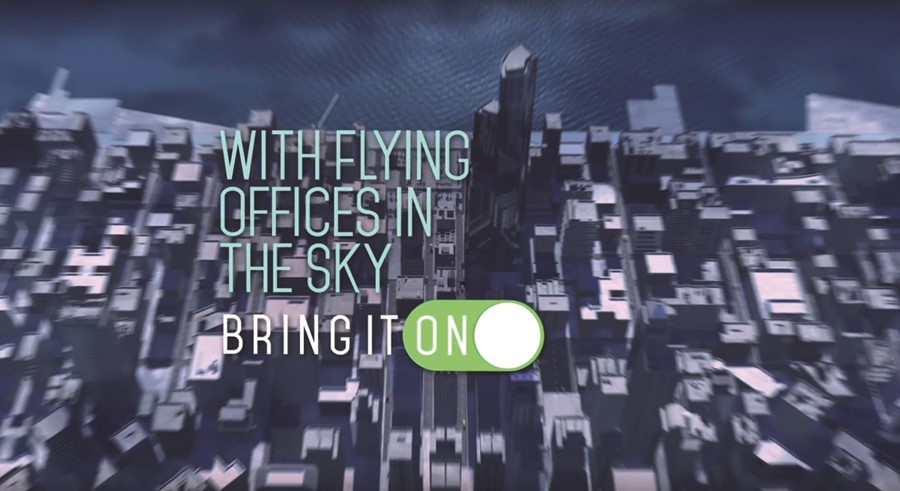Brand profile: Inmarsat Aviation

With challenges related to awareness, market share, internal structure and business model, Inmarsat Aviation had to adopt a startup mentality and bold strategy in order to achieve success. Brittany Golob reports
The challenge was set: Inmarsat Aviation was introduced as a sub-brand with a startup mentality in the Inmarsat family. It had virtually no brand awareness to speak of and was only minimal understood by target customers. It had to drastically address its communications in order to achieve anything resembling financial success.
But those charged with altering the company’s course have pulled it off, thus far, though the journey has been peppered with obstacles. The brand had a couple things going for it. First, Inmarsat is a heritage brand with a strong reputation in international communications. Second, 90% of planes are currently using Inmarsat’s safety and operations communications systems. Third, the communications team was willing to throw out the rulebook for B2B communications and embrace a gutsy, eye-catching approach to introduce itself to the world.
Inmarsat Aviation’s business objective is simple enough: to outfit the world’s airlines with excellent in-cabin communications capabilities allowing passengers to access wifi from 30,000 feet. Dominic Walters, vice president of marketing and communications at Inmarsat Aviation, says, “I joined Inmarsat Aviation and there were about two people in marketing communications. We were, at the time, unknown in the industry. One of the biggest challenges that we faced is that we had just won one of our biggest contracts – with Deutsche Lufthansa Group to install our GX onto their European fleet. They had basically broken the Inmarsat model.”
Typically Inmarsat had sold its products through resellers, not directly to the end user. With Inmarsat Aviation’s implementation of the Global Xpress Constellation (GX) system, Inmarsat has become a retailer selling directly to airlines.

The other big challenge facing the brand was its own reputation. Walters adds, “Suddenly you’ve got Inmarsat Aviation with 18 months to achieve market share, not known in its business, in its market space, having to move from zero to hero in a very short space of time.” He said the team began operating like a challenger brand, acting quickly and with agility to respond to ongoing challenges. Inmarsat’s own heritage and reputation thus could not entirely be leveraged in its new foray into aviation connectivity. The GX also lacked credibility because its products hadn’t been flying – unlike most of its competitors – at the beginning of the campaign.
Phil Harvey, current brand and communications director at Inmarsat Aviation, began working on the project when he was MD of OgilvyOne Business. He says, “It was very apparent from the word ‘go’ that Inmarsat was embarking on a journey without knowing where it was going to lead them. Decisions were made quickly, u-turns were common and the exponentially growing team was running very fast just to stand still. Our first job was to get a sense of alignment among the leadership team and build a manifesto that helped everyone understand what the goal was and how we aimed to get there.”
The challenge increased it was determined that the brand had a two year window – at most – to win its market share before the point of market saturation; Walters says by mid-2018, 60-65% of airlines will have chosen their connectivity partners. “We don’t have any time to mess around,” he says. All of these factors meant the Inmarsat Aviation campaign had to be aggressive and it had to change the perception of the Inmarsat brand and its aviation capabilities with a bold efficacy.
Enter the ‘Bring it On’ campaign. Instead of talking about the GX in technical and capability terms, it focused on brand promotion and market positioning. Through research, Inmarsat Aviation found that most decision makers within airlines didn’t grasp the jargon associated with in-flight connectivity. They wanted to understand the real benefits a product like the GX system could bring – in terms of customer experience and bottom line.
November 2016 would be the first test. The campaign, the brand and the GX all launched at a trade event in Singapore. Inmarsat Aviation had to compete against marketing spends up to 10 times higher than its own, as well as the lack of proof points from existing customers. Straplines addressed the real benefits in-flight connectivity could bring, including ‘Clearing immigration an hour before landing. Bring it On.’ The practical and confident straplines were complemented by eye-catching graphics and the use of black, as opposed to traditional corporate visual tropes.

Harvey says of the launch, “From my perspective on the agency side – Inmarsat provided that holy grail – an exciting product, in a rapidly growing market, with a huge challenge, with a client that brave enough to say ‘yes’ and the opportunity to grow. It really was one of the most exciting periods of my career to date. Having delivered what we set out to and launching GX in Singapore was an incredibly proud moment for me personally – and a testament to a focused, committed and talented team at the agency and client alike.”
The standout launch was rounded out by social, advertising and a more educational approach on the Inmarsat Aviation website, further elucidating the case for inflight broadband through case studies. “We had to start looking at the conversation and the challenge was the industry was still attacking us. Our sales guys had faced constant barrage. When you’re not flying, everything on paper sounds like you will have the best product in the market,” Walters says. Before the show in Singapore, Inmarsat Aviation took a global tour demonstrating the GX, helping potential customers become familiar with the product and the brand.
The campaign also included trade show installations with big, bold implementations to create an impact and draw new visitors, as well as targeted press and advertising among a carefully curated audience of 7,500 key decision makers.
Inmarsat Aviation brought it for the airline audience. But, the campaign had a secondary effect, one that may serve the brand strongly in the future. The internal audience was motivated by ‘Bring it On’ and morale – previously at a dangerous low – had been boosted by the Singapore launch and successful campaign. The shift in approach to messaging and awareness also increased understanding among employees about GX and the value of in-flight connectivity. The ‘Bring it On’ strapline has also become a key phrase within the internal audience, which is beginning to shift the conversation about the brand and its services.
It worked. “Our target audience found us impossible to ignore and were drawn to our clear messages defining a previously intangible welsh of opportunities driven by in-flight broadband,” says Walters. Awareness is up 9% industry-wide and up 45% among the target audience. Inmarsat Aviation has become the joint leader for market awareness within six months, achieving 67% awareness. The website’s visitors have doubled among the brand’s target audience. Crucially, customer meetings at trade shows – the primary sales tool for airline connectivity systems – have tripled, leading to over 250 direct customer leads. “Our sales guys are no longer asked, ‘Who are you?’ The question now is, ‘How can you help?’” Walters adds.
With only months to the ‘saturation point’ in the airline industry, Inmarsat Aviation is continuing to bring it on to its target audience, internally and externally, to achieve greater awareness and promote a deeper conversation about connectivity in the airline industry more broadly.












